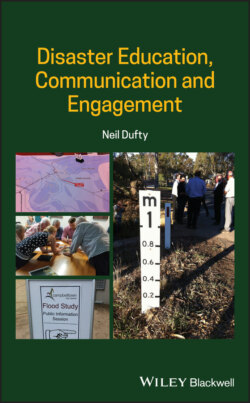Читать книгу Disaster Education, Communication and Engagement - Neil Dufty - Страница 25
2.3.4 Community Participatory Disaster Risk Assessment
ОглавлениеAs part of disaster risk management, an understanding of the spatial dimensions of risk is required across vulnerability, exposure, and hazard, as well as the at-risk community's capacities (Keating et al. 2016). However, ‘a major gap still exists between what the models can provide and what local practitioners need; and there is a serious lack of appropriate local information on disaster impacts, as well as information on exposure and vulnerability, the latter of which is especially difficult to define, measure, and monitor’ (Liu et al. 2018).
Community participatory disaster risk assessment has been considered an effective way to collect disaster risk information. Major humanitarian and development organisations and agencies, such as the International Federation of Red Cross and Red Crescent Societies, Oxfam, and CARE International, have used community-based participatory risk assessments to gather, organise, and analyse information on the locale-specific vulnerability and capacity of communities. There are numerous examples of communities participating in risk assessments through provision of their local knowledge.
Community mapping plays a key role in the participatory disaster risk-assessment process. Mapping helps stakeholders visually represent the bio-geophysical characteristics and various resources in a community. Additionally, according to Liu et al. (2018), it ‘is highly useful in stimulating discussions among community members’ and resultant disaster learning.
